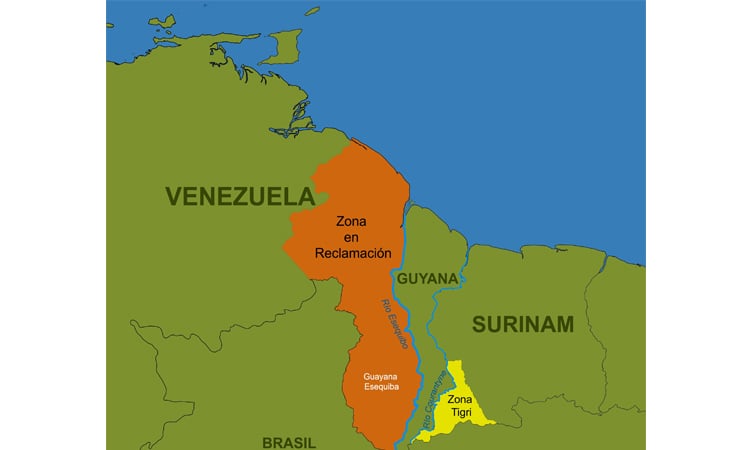News Flash
News Flash

SAN MARTIN DE TURUMBANG, Venezuela, May 29, 2025 (BSS/AFP) - "Essequibo is ours," proclaims a hand-painted sign on a wood panel decorating a bank of the Cuyuni River, a geographic feature which Venezuela refuses to accept as a legal border with Guyana.
The sign welcomes visitors to the village of San Martin de Turumbang on the edge of Essequibo -- the disputed oil-rich region administered by Guyana for decades but claimed by Caracas.
On the other side of the river, Guyanese flags flutter on brightly-colored wooden houses.
Despite the political nature of the village's welcome sign, residents are not particularly bothered by the centuries-old border dispute that has gone all the way to the UN's highest court.
Much more pressing are the challenges of daily life in a country battling sanctions, political upheaval and economic strife.
The village of 3,000 residents, mostly Indigenous people, is surrounded by jungle and gold mines that employ most of its inhabitants.
The locale has no electricity or functioning schools, and is plagued with dilapidated, potholed roads.
"We feel abandoned," said Telda Donald, a 52-year-old resident born in Guyana who also has Venezuelan nationality.
- Where's the frontier? -
Last Sunday, Donald and other residents of San Martin de Turumbang could take part in elections for a governor and other officials for the "state" of Guayana Esequiba declared by Caracas, but not recognized by anyone else.
The village is about 100 kilometers (62 miles) from the town of Tumeremo, named by authoritarian Venezuelan President Nicolas Maduro's government as the administrative capital of the new state.
Georgetown and Caracas both lay claim to Essequibo, which makes up two-thirds of Guyana's territory and is home to 125,000 of its 800,000 citizens.
Guyana, a small former British and Dutch colony, insists the frontiers were determined by an arbitration panel in 1899.
But Venezuela claims the Essequibo River further east forms a natural border recognized as far back as 1777.
The centuries-old dispute has intensified since ExxonMobil discovered massive offshore oil deposits a decade ago, giving Guyana the largest crude oil reserves per capita in the world.
- 'Brought us problems' -
Venezuelans and Guyanese used to cross the Cuyuni River freely for business and pleasure, but movement has been curtailed by the territorial tensions.
"It has brought us problems," Jose Armando Ruiz, a 70-year-old Venezuelan miner, told AFP.
"Before, we used to cross, we went here, we went there, we worked together, now we can't go over there (to Guyana)," he added.
Jose Mendoza, a miner from Guyana who has lived and work in Venezuela for over two decades, wore a t-shirt the day after the elections with the phrase: "Essequibo is Guyana's."
It was only because he had no other clean clothes, the 34-year-old laughed.
"I hear that Essequibo belongs to Guyana, but I don't know," he told AFP.
- 'Lit by the stars' -
Brian Jacobs is the highest authority in the village. "Good morning! How are you? Welcome," he told AFP in English, the language of Guyana. Venezuela is Spanish-speaking.
In San Martin de Turumbang, residents receive cellphone coverage from a Guyanese operator.
Education, too, is provided on the Guyana side, as a decline in mining hauls has meant there is not enough money to pay teachers for the village school.
The village needs about $20,000 a month for fuel for its power plants, but has been plunged into darkness for weeks as there is no money.
"We are lit by the stars, by God, by the moon, because we don't have diesel," says Jacobs, who was born in Guyana.
Residents claim the Venezuelan government has restricted their access to the mines since last year.
There are three military bases on the route from San Martin de Turumbang to Tumeremo, with several checkpoints in between.
On a small island stands a military fort facing Guyana to which the Venezuelan military has built a bridge across the Cuyuni River, painting it in the yellow, blue and red colors of the national flag.